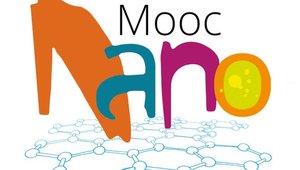Welcome to the nanoworld!
Categories
About the course04/01/2025

When we talk about nanosciences and nanotechnologies (NST), we are talking about objects, manufacturing processes, structures and devices on the nanometre scale (1 nm = 10-9 m), i.e. on a scale close to the atom and the molecule. Nanoparticles can be natural, artificial or hybrid. They can take the form of grains (nanometric size), fibres (nanometric diameter) or thin layers (nanometric thickness).
But at this scale, matter behaves in surprising ways. Nanomaterials, which we can now extract or manufacture, can improve the physical, chemical or biological properties of our everyday objects: silica or carbon nanotubes in our cements to improve their mechanical properties or resistance to abrasion; titanium nanoparticles in paints to preserve colour and reduce pollution; nano-textiles that are more resistant, antibacterial and hydrophobic; nanoparticles that can guide drugs to diseased organs; the transistors in the chips of our telephones and computers; and the graphene particles in our latest conductive, transparent and flexible screens, to name but a few.
The Understanding Nanosciences course by the University of Paris-Saclay explains the techniques and tools used to observe nanoparticles, in particular scanning or transmission electron microscopy and near-field microscopy. It also explains the different manufacturing principles (top-down or bottom-up) for transistors, which are the building blocks of integrated circuits.
Nanotechnologies are now part of our everyday lives. The course devotes a chapter to each of their fields of application (chemistry, physics, biology):
- What chemical bonds and synthesis strategies are used in nanochemistry to assemble nano-objects. In particular, how are gold nanoparticles synthesised? What are nanoporous materials, how are they made and what are they used for?
- The many applications of nanophysics research include nanoelectronic components, light-guiding structures and nanosensors.
- How does nanobiology study and manipulate molecules? How can diseases be treated with nanomedicines? How do we manipulate liquids on chips for medical diagnosis (micro-nanofluidics)?
Finally, the emergence of nanosciences and nanotechnologies has raised a number of questions at global level (United States, Europe), as well as at the level of governments, citizens and consumers. Are nanotechnologies dangerous (nanotoxicity, ecotoxicity)? What are the social, health and environmental issues? How are governments and Europe regulating the emergence of nanotechnologies and nanosciences in our daily lives?
The issue of nanoscience and nanotechnology lies at the crossroads of science, technology and society. It concerns us all, so if you have a good grounding in the sciences and, above all, a curiosity about 'nanos', take the opportunity to learn more by choosing one of the three courses offered in this MOOC, depending on your level and your desire to learn more.
To find out more and register, click here.
Paris-Saclay University
Course starts: 28 April 2025
Enrolment deadline: 9 June 2025
Editor's note: The illustration in this article was created using Firefly, an artificial intelligence tool from Adobe.
Related posts
5 raisons de s’inscrire au MOOC « Éducation inclusive : ressources numériques adaptées pour la classe »
Categories
About the course5 raisons de s’inscrire au MOOC «Les précarités alimentaires»
Categories
About the course




